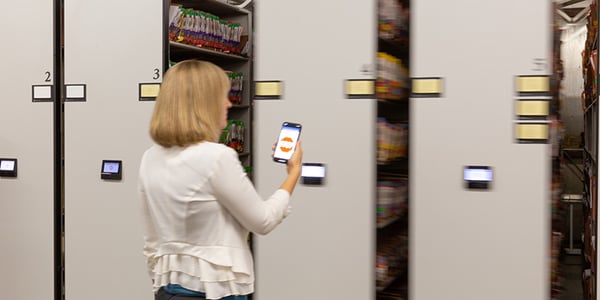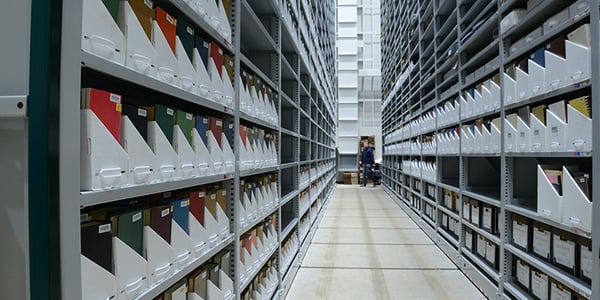University students are returning to campus sooner this semester. But that’s not the only change campus libraries are encountering. Library reopening in COVID-19 has added priorities — keeping staff and patrons safe during a pandemic. This article rounds up some suggestions for safely reopening libraries.
Librarians know the Dewey decimal system inside and out. But disinfecting and cleaning collections for campus safety isn’t typically covered in library educator programs. Colleges are taking various approaches to bring students back. Courses may be on campus as usual or with fewer students. Or students are taking hybrid courses both online and in-person. Even those exclusively virtual learning can require access to library holdings.
Despite these differences, the mission as libraries reopen during COVID-19 is the same across the country: Balance the safety of staff and patrons with the goal of providing community access to library resources.
Safely Reopen Library Spaces
Libraries serve an important function on campus. They’re a resource repository but also a central meeting place and study hub. At the same time, they have an obligation to keep patrons and staff healthy. The COVID-19 library, then, needs to be set up to support several priorities. This can require reimagining the library’s layout. There are some great options:
- High-density mobile storage
- Off-campus storage
- Touch-less technology and other electrical upgrades
- Smart lockers for book collection
- Rethinking what your library looks like
Librarians need to review federal, state and local laws, review health agency guidelines, draft and document new policies and educate staff and patrons about new procedures. It’s a lot of work. But that’s not all. With limited budget available, many libraries are looking for ways to reconfigure their stacks and common areas to enforce greater social distance. That’s where the following suggestions come into play.
On-site high-density compact storage
There is a variety of library reopening plans in the works on university and college campuses. Some institutions are taking this opportunity also to think long-term about the changes they might make in their libraries. Instead of focusing only on the immediate need, they’re thinking of how storage system changes can help now and in the future too.

Spacesaver’s high-density mobile shelving systems keep materials on-site. But they take up about half the space of static (non-moving) shelving. This frees up space for individual study carrels, socially distant collaboration areas and other uses. At Montclair State University, for example, the graphic design department needed lab space. Putting high-density mobile shelving in the library basement freed up room for a classroom, design studio and an office with large-format printers for design projects.
To reduce high-touch surfaces, consider powered mobile systems that allow users to open and close aisles from their personal mobile devices instead of using touchscreens.
Off-campus storage
Sure, the library is proud of its thousands of titles and unique collections. But right now, there’s something to be gained from relocating materials to offsite storage. Removing non-essential furniture, equipment and instructional materials frees up space for social distancing. Consolidating printed materials, artwork, archives and other collections off-campus can also make the library easier to clean.

Long-term, when this is all over, your library can find new ways to reconfigure the opened up space to offer more collaborative workspaces or enhanced access to technology. The University of Wisconsin-Madison built an off-site facility with high-bay shelving to optimize storage space. With XTend® Mobile High-Bay Storage System’s estimated capacity of more than 1.2 million volumes, UWM freed up approximately 30,000 square feet on campus.
Touch-less technology
Reducing the number of high-touch surfaces in the library is the top way to prevent disease transmission. Accomplish this with app-controlled shelving or lockers that reduce the need for contact with levers, buttons or locks.
Spacesaver’s electric-powered high-density mobile shelving comes with the TUSCTM Control app. This touch-less control allows users to open and close aisles, browse and search for stored items and view the system’s safety status from their own personal devices.
Library clients with existing mechanical-assist Spacesaver compact shelving systems can convert their mobile shelving to powered operation. Then, they can take advantage of the control app which lets users do everything they need to do with the shelving, without actually touching the system control pads.
Using smart lockers
Smart, touch-less technology can also reduce contact with lockers in the library. Beyond simple storage, these lockers offer many added benefits in a library reopening in COVID-19 times. For one thing, circulation desks can be replaced with smart delivery lockers instead:
- A patron can reserve books online.
- Library staff retrieves the books and checks them out to that student
- The books are placed in the touch-less locker
- Locker technology sends patrons notification books are available for pick-up
- Patrons collect the books, opening the locker open using their personal devices
- The library gets notified when the books are collected
- That locker can be flagged for cleaning before use again for book delivery
This limits exposure and contact of both staff and patrons. At the same time, it reduces the need for patrons to gather and wait at a circulation desk.
Smart lockers can also prove useful for conveniently storing hazardous cleaning and disinfection products for staff use only. Short-term locker solutions can be easily installed to meet the immediate need. Then, the university can later move that locker installation to another area of campus.
Reimagining library space
Having to cap indoor capacity is seeing universities get creative with repurposing space. Because of their size, gyms, student unions and libraries are going into service as classroom venues. But even then, administrators are trying to create more of a classroom feel using partitions, moveable or locker walls to separate spaces.
These turbulent times are wreaking havoc on higher education revenues. But even with budget freezes, there are some small measures that can make a difference. Using carts or flexible modular furniture, universities can delineate smaller, more personal spaces that still have open-air circulation.
Some schools are even using the actual shelves of their mobile systems to create individual study spaces. By expanding the shelves completely, the institution gains more room-like spaces in their new version of a library.
There are many ways to reopen a library in the COVID-19 environment to offer access to resources and protect patrons and staff. As universities go back to school, libraries are looking at new storage solutions, touch-less technology and repurposing space to improve efficiency and support social distancing.
Libraries with a need to reduce touchpoints and maintain access can create a safer environment with our help. Patterson Pope’s experts have years of experience working in higher education to maximize space, enhance productivity and give a fresh spin to budget-strapped libraries. Contact us today!

















